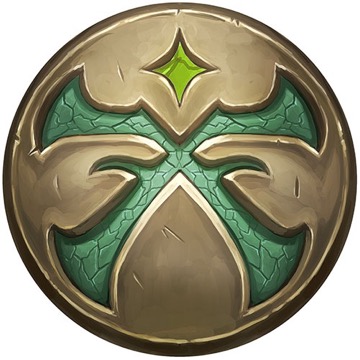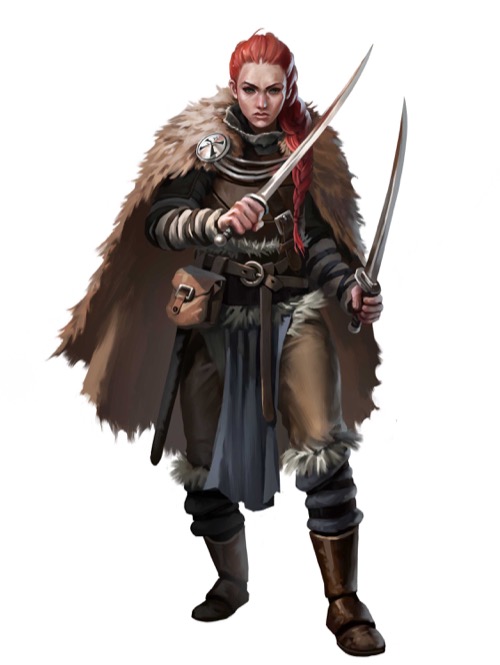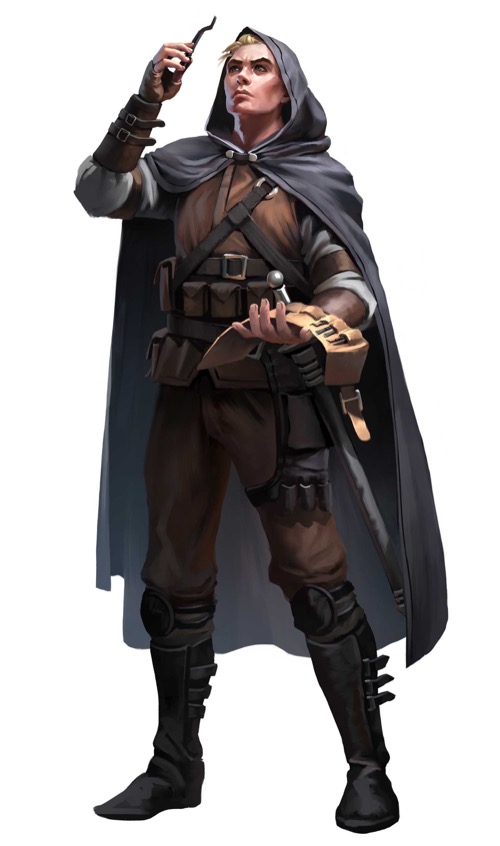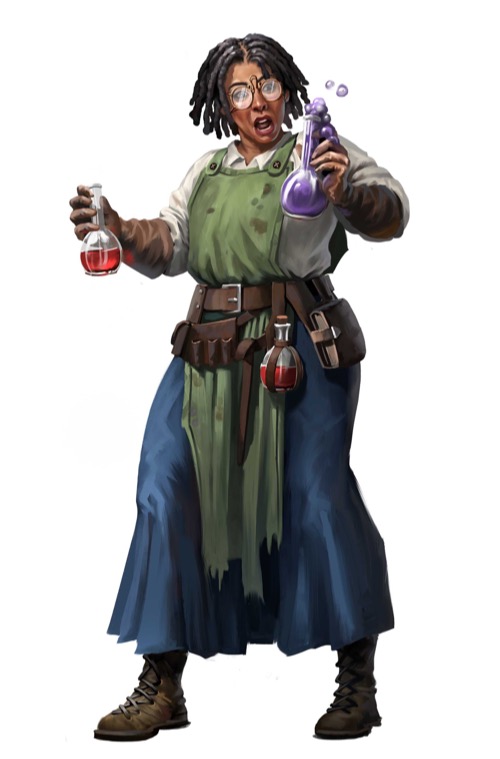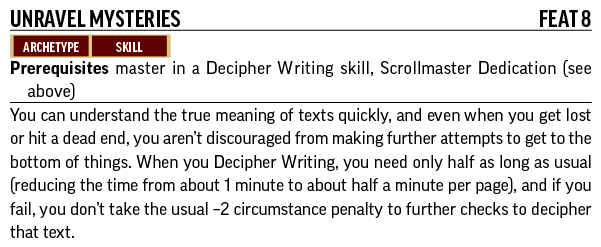We’ve been taking a look at the various organizations featured in the Lost Omens Character Guide over the past few weeks. (Hop over here if you’ve missed these!) While all of these are great in their own right, there’s one organization that was an immediate shoo-in when we started early discussions for this book: the Pathfinder Society! The Pathfinders are probably one of the most well-known and most widespread organizations in our Age of Lost Omens setting. Heck, they have the name of our game in the name of the organization! There was no way we could ignore them!
The Pathfinder Society is a globe-trotting organization whose agents are dedicated to exploring the world, finding lost knowledge and relics, and reporting their findings both to the Society itself and to the rest of Golarion via the Pathfinder Chronicles, a publication released by the Society that is essentially a “greatest hits” of reports from Pathfinders. (For a taste of the kind of missions Pathfinders go on, check out Howard Andrew Jones’s fiction from a few weeks ago!) People join up with the Society for a number of reasons. Some want to seek knowledge, others prefer the glory that comes with their findings, others still join up for the fun and thrills involved with their missions, and some just want to help the Society and further its causes.
The Society contains a few broad factions that cover most of these general aspects and most Pathfinders typically associate with one or two of these factions during their career, though such association isn’t compulsory. These factions are the Envoy’s Alliance—a group dedicated to the well-being of the Society and its members, the Grand Archive whose members are devoted to the pursuit of knowledge, the Horizon Hunters who prefer to just travel for the sake of exploration and locating new and forgotten sites, and the Vigilant Seal which includes those Pathfinders who rise up to contain the threats the Society encounters on its missions.
Due to their constant travels, the Pathfinders make use of lots of different types of equipment. These vary from common adventuring gear to more specialized tools like wayfinders. These magical compasses serve both as a badge of membership for Pathfinders and also as a useful tool for their travels. The typical wayfinder, which is located in the Core Rulebook, allows its user to create magical light and tap into the power of the magical gemstones known as aeon stones. The common wayfinder isn’t the only one in use by the Pathfinders, however. This book provides a few new wayfinder types along with other magical items like the fortifying pebble, a talisman that reduces the damage dealt to the item to which it is affixed.
Players looking to play a character who is a member of the Pathfinder Society can do so pretty easily. The Lost Omens World Guide featured the Pathfinder Agent, an archetype representing a more generic member of the Society. That archetype covers the general abilities one comes to expect as a member of the Society. Namely, it gives you means of helping you search around on your travels, gain more knowledge, and help out your allies. (Explore, report, cooperate!) Characters who took this archetype will find a few more feats to help expand their different skills. These include the Everybody Duck! feat which helps out when you accidentally set off a trap you’re trying to disarm and the Recognize Threat feat to better help you recognize the monsters you fight.
Not all Pathfinder choose to be jacks of all trades, however. Part of a Pathfinder’s training requires that they gain the approval of the three deans of the Grand Lodge before they are considered full-fledged agents. These deans are known as the Masters of Scrolls, Spells, and Swords and each specialize in a different skill to train up and coming agents. The Scrolls train in history, knowledge, and observation; the Spells focus on magical lore and theory; and the Swords teach recruits combat and survival techniques. Once they become proper Pathfinders, many agents continue to associate with their peers from either the Scrolls, Spells, or Swords and undertake missions that favor a particular branch.
Characters that want to represent this affinity can do so with the three new archetypes in this book. The Scrollmaster, Spellmaster, and Swordmaster archetypes all follow in the vein of the Society branches themselves. The Scrollmaster, for example, is all about researching and being prepared and gains abilities to both further and make use of their extensive knowledge. On the other hand, the Spellmaster focuses on magic and using said magic for things like creating protective wards and even absorbing the spells of your foes to fire the spells back at them!
If you prefer your survival and that of your companions over anything else, you might consider taking the Swordmaster archetype. The archetype provides new options for both survival and faring well in combat. Some of these options are designed to help you prevent damage to yourself, while others are here to help you defend your allies. Regardless of which branch you associate with, your character can take these archetypes right away or in addition to the Pathfinder Agent archetype. Much like with the Hellknights and Knights of Lastwall, these new archetypes dovetail perfectly from the Pathfinder Agent, allowing you to mix and match the skills and abilities to your liking.
And with that, we’ve covered all five of the major organizations found in the Lost Omens Character Guide! If you’re interested in the Pathfinders, make sure to check out Mike Kimmel’s work in the Character Guide when it releases on October 16th! Also, if the taste of the Pathfinder Society in the book isn’t enough for you, consider checking out Pathfinder Society Organized Play! Organized Play lets you go on missions as true Pathfinders! Just make sure to always explore, report, and of course, cooperate!
Luis Loza
Developer
Scrolls and Spells and Swords, Oh My!
Friday, October 11, 2019
